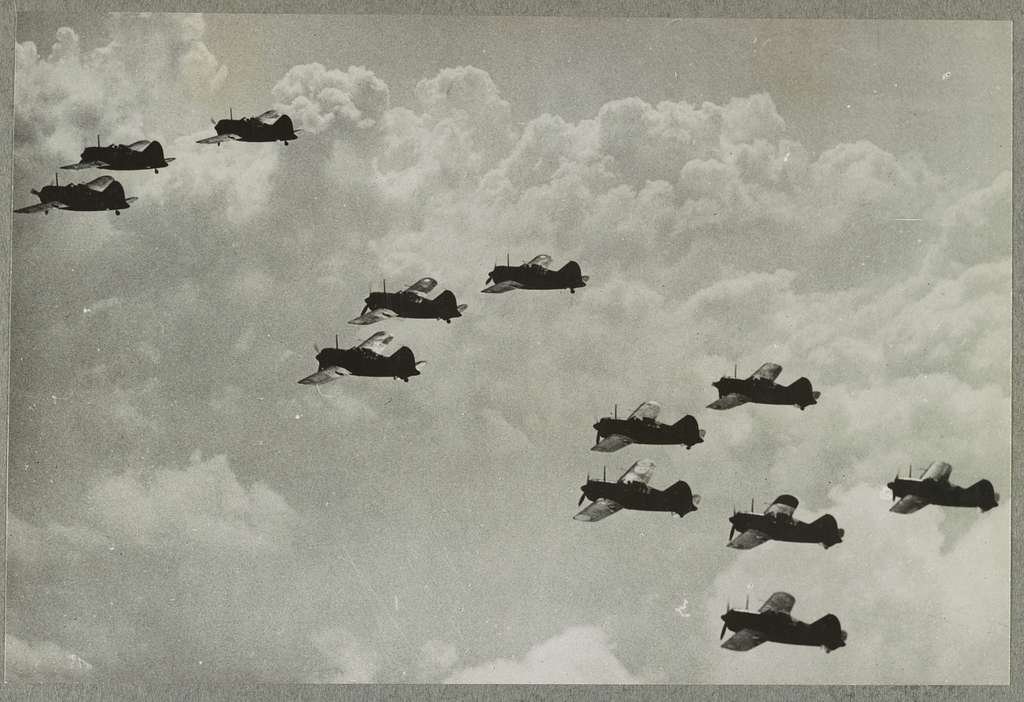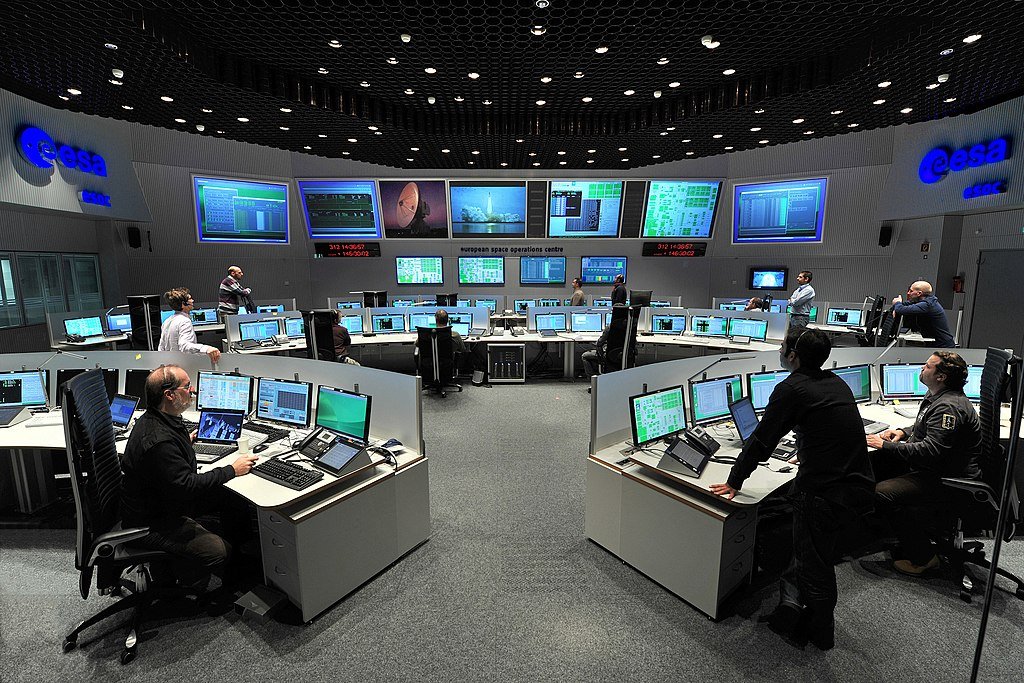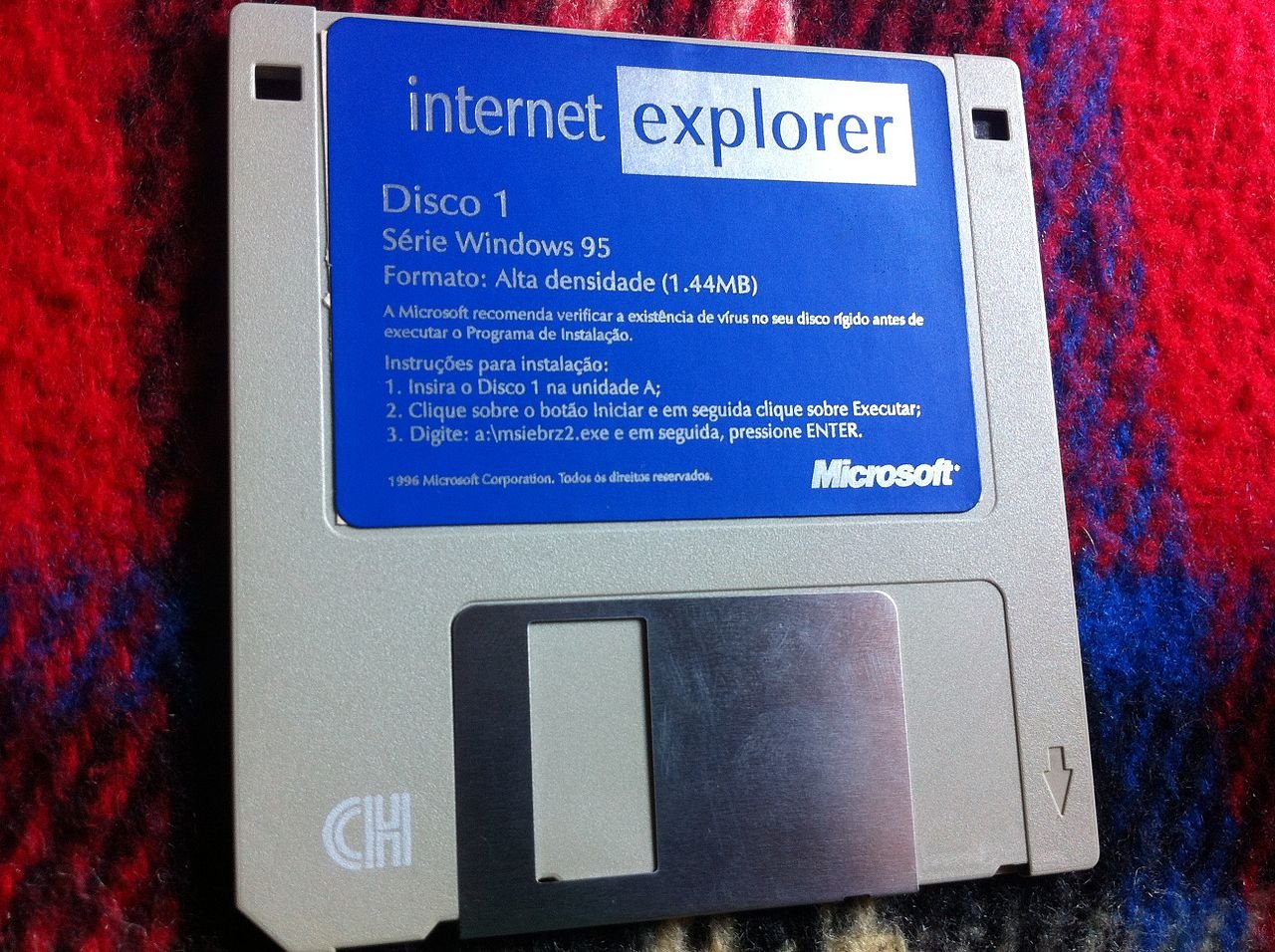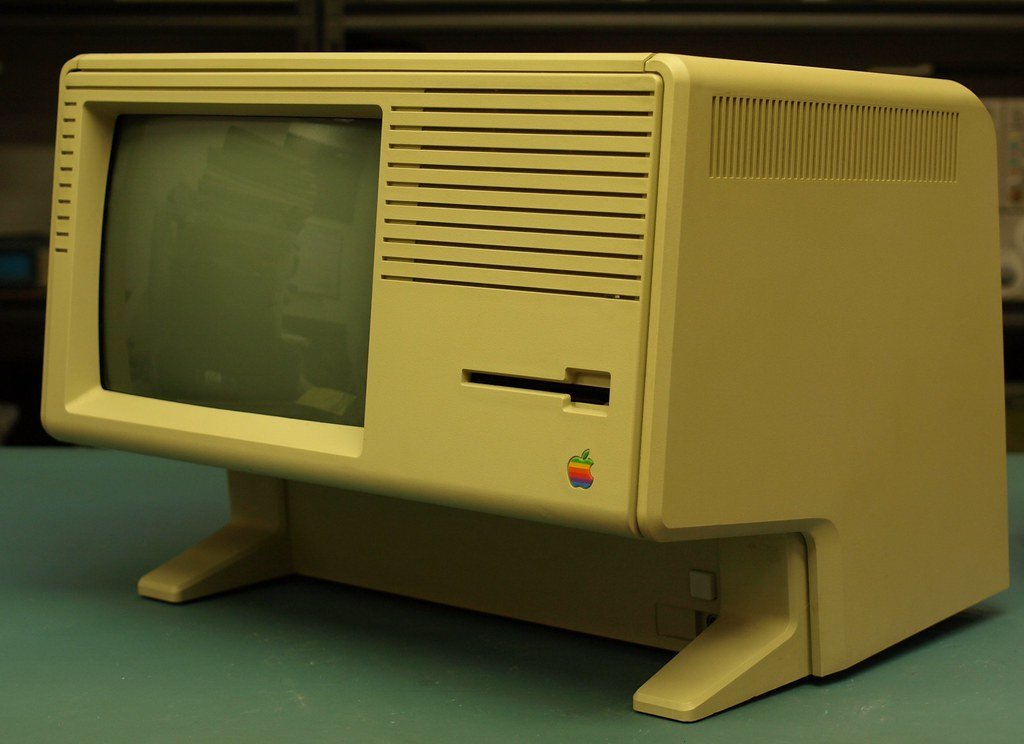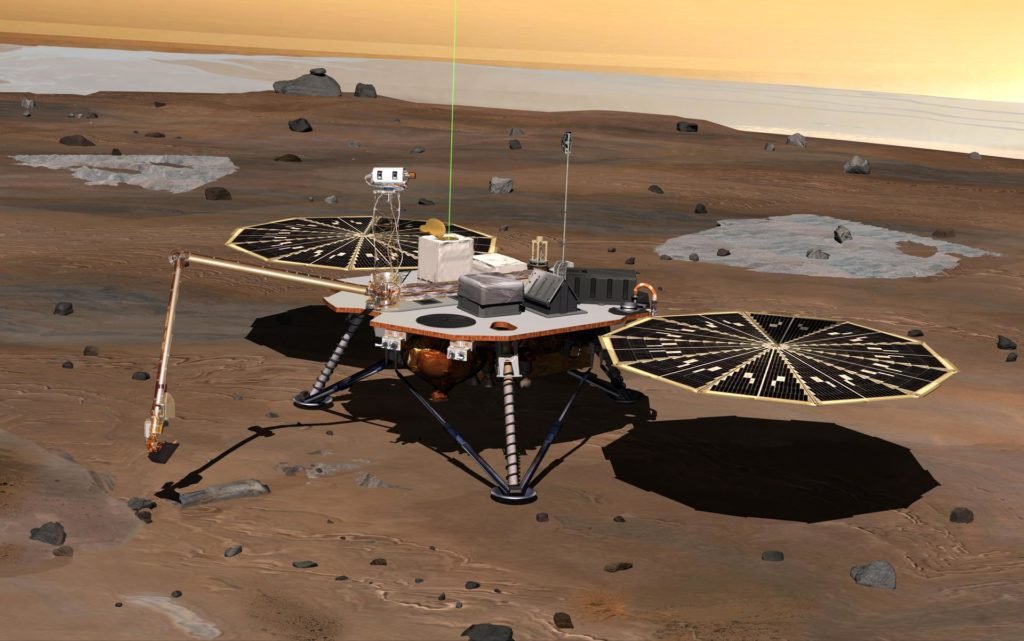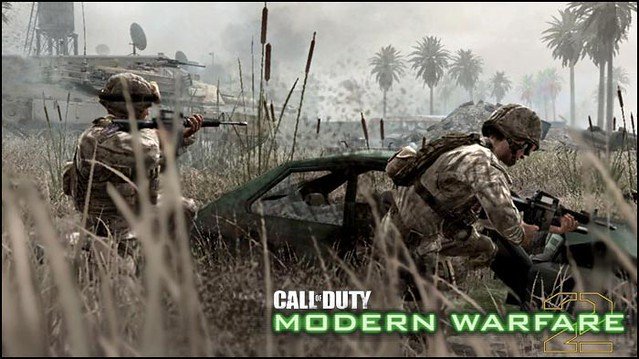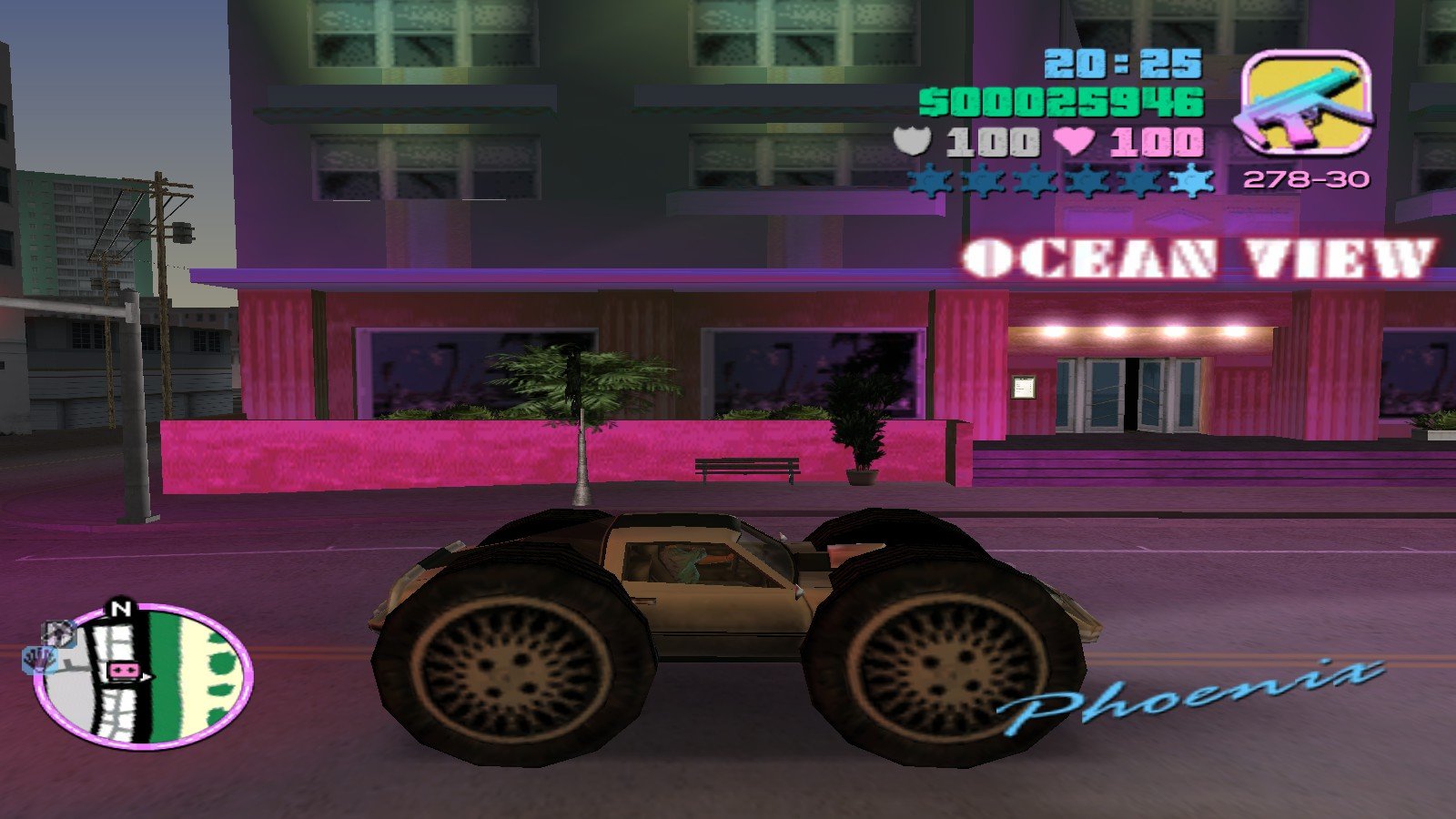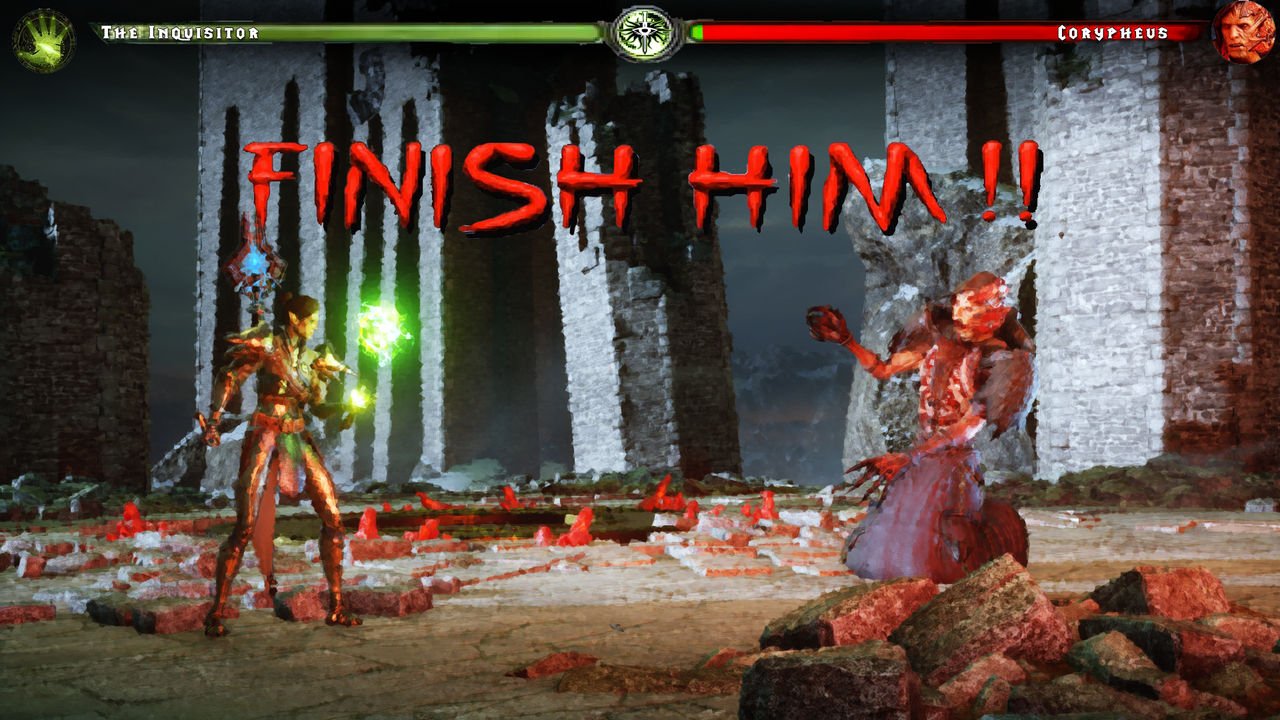The Call of Duty franchise has grown from a single World War II shooter in 2003 into a cultural phenomenon and gaming powerhouse spanning decades. This series has taken players from the trenches of WWII battlefields to the high-tech combat of the future and even into all-out battle royale wars. In this comprehensive journey through Call of Duty game history, we’ll explore the CoD franchise evolution across its many eras. Along the way, we’ll meet the key Call of Duty developers (Infinity Ward, Treyarch, Sledgehammer Games) and dive into the CoD series timeline of major releases.
We’ll also examine how Modern Warfare’s story revolutionized shooter campaigns, how the Black Ops timeline wove an intricate Cold War saga, and how new entries like Warzone redefined online play. From multiplayer innovations and engine upgrades to cultural impact, controversies, and the franchise’s legacy, this is the epic history of Call of Duty – told for both longtime fans and curious general readers. Let’s lock and load into the timeline!
Table of Contents
Origins: World War II Roots (2003–2006)
Call of Duty began on the PC in 2003, dropping players into the gritty trenches of World War II. The first Call of Duty (2003) was developed by a then-new studio called Infinity Ward – a team formed by developers who had previously worked on the Medal of Honor series. They set out to create an immersive WWII shooter that captured the intensity of battle from multiple perspectives. In the original Call of Duty, players fought through iconic WWII conflicts like the Battle of Stalingrad and D-Day, experiencing the war through American, British, and Soviet campaigns.
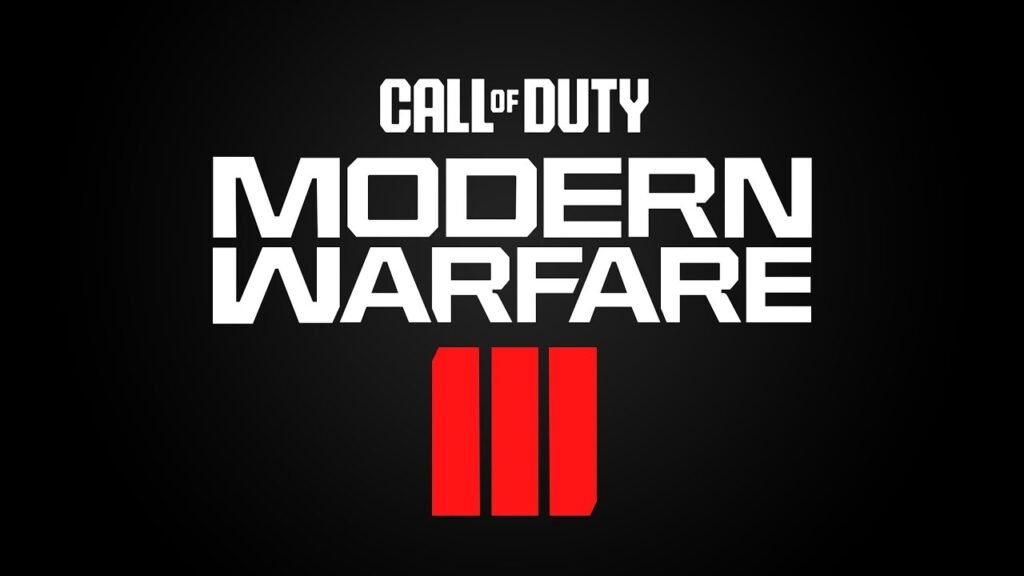
The game’s cinematic presentation and relentless action earned it critical acclaim (even winning many Game of the Year awards in 2003) and established Call of Duty as a new contender in the shooter genre.
Building on that success, Call of Duty 2 arrived in 2005 with even more ambitious WWII storytelling. It featured improved graphics and AI, thanks in part to debuting on next-generation consoles (it was a launch title for the Xbox 360) as well as PC. CoD 2 upped the realism with chaotic battlefield scenes – including a famous D-Day mission inspired by Saving Private Ryan – and introduced regenerative health in place of health packs, which was a big gameplay shift at the time. The intense campaign and robust multiplayer made CoD 2 incredibly popular, cementing Call of Duty’s reputation for epic WWII action.
In 2006, Call of Duty 3 continued the World War II focus, but with a twist behind the scenes: it was developed by Treyarch, a different Activision-owned studio. Treyarch took the reins for this third main entry, which was notable for being the first Call of Duty made primarily for consoles (Xbox 360, PS3, etc.). CoD 3 delivered another cinematic WWII campaign – this time centering on the Normandy breakout and featuring multiple national perspectives – and it introduced features like drivable vehicles and closer hand-to-hand combat sequences.
This era established a pattern that would define the franchise’s future: multiple studios working in tandem on Call of Duty, allowing yearly releases without sacrificing quality. By the end of the WWII trilogy (CoD 1–3), Call of Duty had already become a household name among war game enthusiasts, known for its authentic WWII atmosphere and explosive set-piece moments.
The Developers Behind the Franchise: Infinity Ward, Treyarch, and Sledgehammer
As Call of Duty evolved, Activision assigned different studios to handle various entries, creating a rotation that kept annual releases possible. The Call of Duty developers most central to this rotation are Infinity Ward, Treyarch, and Sledgehammer Games – each bringing their own flavor and innovations to the series.
- Infinity Ward is the original studio that kicked off the franchise. Based in California, Infinity Ward created Call of Duty 1 and 2, and later shifted the series to modern combat with the groundbreaking Modern Warfare titles. They are known for tight gunplay mechanics and cinematic storytelling. Notably, Infinity Ward underwent some turmoil in 2010 when its co-founders Vince Zampella and Jason West had a dispute with Activision and left the company (they later formed Respawn Entertainment of Titanfall and Apex Legends fame). Despite that, Infinity Ward remained a driving force, going on to develop major games like Modern Warfare (2019) and its sequels.
- Treyarch, another California-based studio, joined the Call of Duty effort by developing CoD 3 in 2006 and later fan-favorites like the Black Ops series. Treyarch became known for pushing boundaries with alternate time periods (from WWII to the Cold War and beyond) and introducing the hugely popular Zombies mode. They often experiment with gameplay – for instance, branching storylines in Black Ops 2 or a futuristic setting in Black Ops 3. Treyarch’s style tends to emphasize fast-paced multiplayer and cooperative modes alongside their twisting single-player narratives.
- Sledgehammer Games is the relative newcomer among the lead studios. Founded in 2009 (by industry vets who had worked on the Dead Space series), Sledgehammer first collaborated with Infinity Ward on Modern Warfare 3 (2011) and then led development on Call of Duty: Advanced Warfare (2014). Sledgehammer’s contributions include a penchant for high-tech themes and polished visuals – they introduced the exoskeleton movement system in Advanced Warfare and later revisited WWII with a gritty lens in Call of Duty: WWII (2017). Sledgehammer also developed Vanguard (2021) and co-developed other recent titles, proving themselves as a core pillar of the annual release cycle.
Other support studios (like Raven Software, Beenox, and Infinity Ward’s satellite teams) have also been crucial in assisting with multiplayer, extra content, or specific platforms. But Infinity Ward, Treyarch, and Sledgehammer remain the big three driving the CoD franchise evolution. This multi-studio strategy has allowed Call of Duty to deliver new games nearly every year since 2003 – an impressive feat in the industry – while giving each sub-series (Modern Warfare, Black Ops, etc.) a distinct identity shaped by its developers.
Modern Warfare: A New Era of Combat (2007–2011)
By 2007, it was time for Call of Duty to leave the historical battlefields and leap into modern-day conflict. Call of Duty 4: Modern Warfare exploded onto the scene in 2007 and truly transformed the franchise. Developed by Infinity Ward, Modern Warfare shifted the setting to a fictional near-future war against terrorism, introducing a gripping storyline with memorable characters like Captain Price and Soap MacTavish.
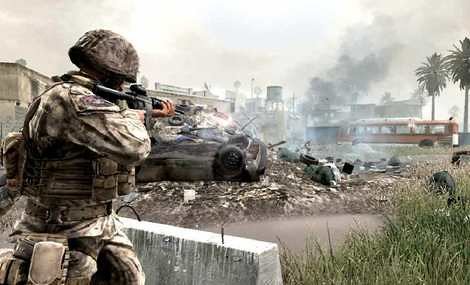
The Modern Warfare story was presented like a Hollywood action-thriller – filled with intense missions (from all-out assaults to stealth infiltrations) and shocking moments, such as a dramatic nuclear explosion sequence that players witness firsthand. One mission, “All Ghillied Up,” became especially iconic for its tense sniper gameplay set in Pripyat, Ukraine. This cinematic single-player campaign set a new benchmark for FPS storytelling.
Perhaps even more influential was Modern Warfare’s multiplayer mode, which established Call of Duty as an online gaming juggernaut. The game introduced a progression system with custom loadouts, perks (special abilities), and killstreak rewards that players could earn by performing well in matches – features that revolutionized multiplayer shooters. The addictive loop of leveling up to unlock new weapons and upgrades kept players hooked for countless hours and essentially became a template that many future games would follow.
With its fast-paced, 60-frames-per-second gameplay and tight controls, Modern Warfare quickly became a fan favorite online. It’s no exaggeration to say that CoD 4: Modern Warfare is often ranked among the best and most influential video games of all time, as it propelled the series into mainstream popularity worldwide.
Infinity Ward followed up with Call of Duty: Modern Warfare 2 in 2009, which took the successful formula and dialed everything up even higher. MW2 continued the Modern Warfare story arc, raising the stakes as a resurgent Russian ultranationalist threat sparks a full-scale war that even reaches U.S. soil.
The campaign was blockbuster in scope – who could forget defending Washington D.C. or the controversial “No Russian” mission? In “No Russian,” the player witnesses (and may participate in) a terrorist mass shooting at an airport, a level so provocative that it sparked global debate about violence in video games.
The developers included an option to skip this level, but it still became one of the most talked-about moments in gaming, highlighting how CoD wasn’t afraid to court controversy in pursuit of a visceral narrative. Despite (or partly because of) the controversy, MW2 was a gigantic commercial success – within days it shattered sales records, and it eventually grossed over $1 billion, surpassing even the biggest Hollywood movie releases at the time.
On the multiplayer side, Modern Warfare 2 refined what the first game built. It added more killstreaks (including player-controlled AC-130 gunships raining down destruction), new game modes, and further customization. One notable addition was the introduction of customizable killstreak packages and the infamous tactical nuke reward for a 25-kill streak. The game’s competitive scene grew accordingly, and CoD was now firmly entrenched as the premier online shooter franchise.
Rounding out the trilogy, Call of Duty: Modern Warfare 3 released in 2011 as a collaboration between Infinity Ward and Sledgehammer Games. MW3 had the tough task of concluding the Modern Warfare saga and did so with globe-trotting flair – from firefights in New York City’s Wall Street to sieges in London and Paris. It provided a satisfying narrative wrap-up to the Soap and Price storyline, all while delivering the polished, adrenaline-fueled gameplay fans expected. Behind the scenes, MW3’s development was marked by the aforementioned staff shake-ups at Infinity Ward, but the end product still excelled.
The multiplayer introduced the support killstreak package (which rewarded teamplay actions) and the popular “Specialist” strike package for lone wolves. With MW3, the Modern Warfare era (at least the original run) ended on a high note, and by this point, Call of Duty was synonymous with top-tier modern military action. In fact, from 2007 onward, each year’s new CoD was routinely the best-selling video game in markets like the U.S., demonstrating how dominant the franchise had become.
The Black Ops Timeline: Cold War Conspiracies and Future Warfare (2008–2015)
While Infinity Ward was steering the franchise into modern combat, Treyarch was carving out its own successful sub-series that would become equally huge: Call of Duty: Black Ops. The seeds of Black Ops were planted with Call of Duty: World at War in 2008. Treyarch’s World at War brought the franchise back to WWII but ventured beyond the familiar European theater – it depicted brutal battles in the Pacific against Japan and on the Eastern Front as the Soviets pushed into Germany.
Notably, World at War had a darker, grittier tone (it didn’t shy away from the harrowing brutality of war). It also introduced a little bonus mode post-campaign that would become a fan obsession: Nazi Zombies. This co-op survival mode, where players fought off waves of undead soldiers, started as an Easter egg in World at War but soon evolved into a full-fledged component of Treyarch’s games going forward. Players loved teaming up to fend off zombies, and Treyarch began crafting elaborate Zombies storylines and maps in each Black Ops installment.
In 2010, Treyarch fully launched the Black Ops sub-franchise with Call of Duty: Black Ops. This game took players to the Cold War era, putting them in the shoes of CIA operatives and soldiers entangled in a clandestine war of espionage, brainwashing, and covert operations. The single-player campaign of Black Ops was praised for its twisty narrative and memorable characters (like Alex Mason, Frank Woods, and the mysterious Viktor Reznov). Set in the 1960s with flashbacks to various hotspots (Vietnam, Soviet bases, Cuba), the story had a conspiracy thriller vibe – complete with a famous twist about the numbers “programming” Mason’s mind.
Black Ops also continued Treyarch’s tradition of star-studded voice casts (actors like Sam Worthington, Ed Harris, and Ice Cube lent their talents) and cinematic flair. The game was a massive hit, becoming at that time the best-selling CoD title ever. It proved the franchise could thrive outside of modern settings, by exploring historical periods with a unique angle.
Call of Duty: Black Ops II followed in 2012 and ambitiously split its story between the late 1980s and the year 2025, making it the first CoD to venture into future warfare. BO2’s campaign hopped between a Cold War storyline featuring Alex Mason in the 80s and his son David Mason’s high-tech battles in the near future, all tied together by one villain’s decades-long revenge plot. This game introduced branching narratives and multiple endings – the choices players made during the campaign could alter outcomes, which was a fresh feature for the series.
On the multiplayer front, Black Ops II added the popular “Pick 10” system for class customization, giving players more freedom in how they equipped their soldiers. It also marked the debut of League Play, an early attempt at a competitive ranking mode to cater to the growing esports interest. Treyarch continued to expand Zombies mode here as well, with elaborate maps like Tranzit and an ongoing story that hooked zombie-slaying fans.
Then came Call of Duty: Black Ops III in 2015, which propelled the timeline even further into the future (the year 2065) with a futuristic cold war scenario. By this point, soldiers had cybernetic enhancements and DNI (Direct Neural Interface) implants, introducing gameplay elements like wall-running and cyber abilities to the mix. Black Ops 3 featured a four-player co-op campaign, allowing friends to play through the story together – another first for CoD campaigns. The narrative was dense and took some mind-bending sci-fi turns (virtual reality warfare, questioning what is real, etc.), showing Treyarch’s willingness to take storytelling risks.
Meanwhile, the competitive multiplayer in BO3 was fast and frenetic, with specialists (characters with unique abilities) adding a hero-shooter flavor. And of course, Zombies mode grew into an even more complex adventure, complete with its own dedicated storyline across DLCs. By pushing into futuristic tech and gameplay while maintaining ties to the Black Ops narrative lineage, Treyarch kept this sub-series feeling both interconnected and ever-evolving.
Throughout the Black Ops timeline, Treyarch effectively built a parallel identity for Call of Duty. If Modern Warfare was all about contemporary military realism, Black Ops was where historical paranoia and sci-fi imagination met. Fans came to love the Black Ops games for their distinctive tone – a mix of secret history and speculative future – and for the rich variety of modes (campaign, multiplayer, zombies) they offered. The Black Ops timeline became a cornerstone of the franchise’s lore, spanning generations of characters from WWII (via World at War) to the future, and it’s a thread that continues to this day (with later titles like Black Ops 4 and Black Ops Cold War, which we’ll get to shortly).
Standalone Entries and New Experiments (2013–2017)
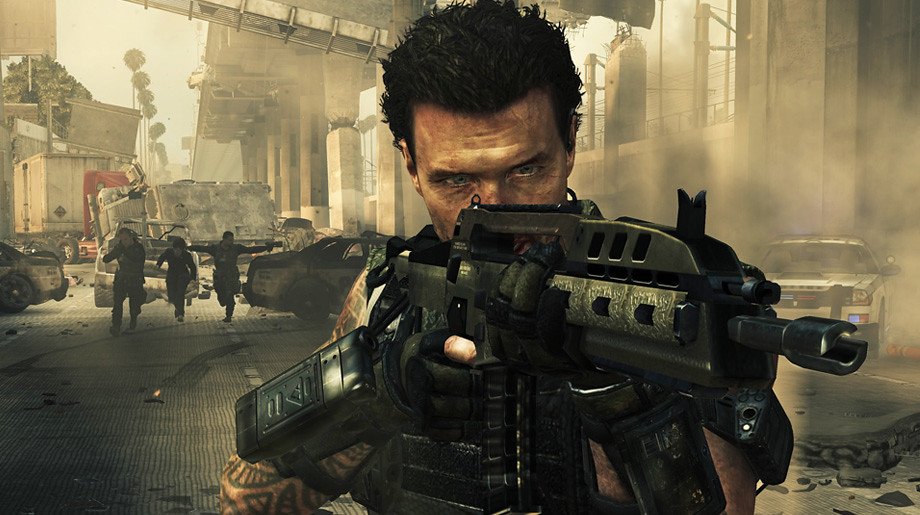
By the mid-2010s, Call of Duty had firmly established its two flagship series (Modern Warfare and Black Ops). However, Activision also greenlit some standalone titles that ventured into new settings or gameplay experiments, keeping the annual releases fresh. These games, while not launching new sub-franchises of their own (at least initially), each left their mark on the series:
- Call of Duty: Ghosts (2013): After finishing Modern Warfare 3, Infinity Ward created Ghosts as a brand-new storyline. This game was set in the near-future (a timeline separate from MW or BO) where a devastating event reshaped the global power balance, and an elite squad called “Ghosts” fought against a Federation of enemy states. Ghosts is remembered for a few standout features: one, it introduced a playable military dog companion (Riley the German Shepherd) that players could control during certain missions – a unique and endearing addition. Two, it was the first CoD released on the PlayStation 4 and Xbox One generation of consoles, which meant it had to show off next-gen graphics and it did include some cool tech upgrades (like better lighting and environmental effects). The campaign had some epic moments (including battles in space and underwater sequences) but ended on a cliffhanger that, to date, has never been resolved with a sequel. In multiplayer, Ghosts added character customization (including the option to play as a female soldier for the first time in series multiplayer) and new modes like Cranked and Extinction (a co-op mode fighting aliens, which was Infinity Ward’s alternative to Zombies). While Ghosts sold very well, it received a more mixed reception from fans and critics – some enjoyed the changes, others felt it didn’t hit the highs of the MW series.
- Call of Duty: Advanced Warfare (2014): Sledgehammer Games’ first solo lead project took Call of Duty into a bold futuristic setting. Advanced Warfare is set in the 2050s and is defined by one major gameplay change: the introduction of exoskeleton suits that gave soldiers enhanced movement and abilities. Players could boost jump, dash, and cloak, significantly increasing the verticality and speed of gameplay. This “advanced” mobility was a dramatic shift from the grounded movement of previous entries and it influenced map designs and play styles (some loved the fresh feel; some traditionalists missed the old style). The campaign in Advanced Warfare cast actor Kevin Spacey (at the time a big Hollywood name) as the villain – the CEO of a powerful private military corporation – lending a bit of star power and a storyline about the dangers of military privatization. Sledgehammer’s attention to detail in graphics was evident; this was one of the early titles on the new console generation and featured impressive facial animations and futuristic tech visuals. Advanced Warfare also revamped multiplayer with the Pick 13 system (an evolution of Treyarch’s Pick 10) and introduced supply drops (loot boxes containing gear and cosmetic items – more on the controversy around that later). Overall, Advanced Warfare proved that CoD could successfully leap into futurism and that Sledgehammer could deliver a full entry equal in production value to the other studios.
- Call of Duty: Infinite Warfare (2016): Infinity Ward’s turn in 2016 went even further into the future – into space, in fact. Infinite Warfare has perhaps the most sci-fi campaign of any CoD: it’s set in a distant future where humans have colonized the solar system, and a faction called the Settlement Defense Front wages war against Earth. Players step into the shoes of Captain Reyes, a space fighter pilot who becomes commander, and the game features everything from dogfights in space in Jackal fighter ships to zero-gravity shootouts on space stations. It even had popular actor Kit Harington (Jon Snow from Game of Thrones) playing the antagonist. Despite a solid story and ambitious gameplay shifts, Infinite Warfare had a rocky reception initially – the reveal trailer infamously became one of the most disliked videos on YouTube at the time, as some fans felt the space setting was too much of a departure. Nevertheless, those who played it found a lot to enjoy, and the game still delivered the tight CoD multiplayer (albeit with wall-running and boosters similar to BO3’s style) and a new Zombies co-op mode with a campy 1980s horror theme. Infinite Warfare may be remembered as an example of franchise fatigue – coming after several future-themed games in a row, some in the community were clamoring for a return to “boots on the ground” realism – but it also demonstrated CoD’s ability to experiment with genre boundaries.
- Call of Duty: WWII (2017): After a string of modern and futuristic games, the series made a much-anticipated return to its origins: World War II. Sledgehammer Games led this project, simply titled Call of Duty: WWII, aiming to recapture the classic historical vibe for a new generation. The campaign followed a U.S. squad in the European theater from the D-Day landings through the Battle of the Bulge and into Germany. In tone, it was somewhat reminiscent of older WWII titles – focusing on the brotherhood between soldiers – but with the cinematic production values of modern games (for example, actor Josh Duhamel portrayed one of the squadmates). WWII (2017) also brought back a sense of realism in gameplay, removing the advanced movement of the previous few titles in favor of traditional movement and authentic World War II weapons. Multiplayer in WWII introduced a unique “Divisions” system (character classes with specific training and loadout restrictions) and a social hub area called Headquarters where players could interact between matches. It also had a Nazi Zombies mode, continuing the now standard inclusion of a co-op zombies experience. The game was generally well-received as a back-to-basics palate cleanser and proved that audiences still had an appetite for World War II when done with current tech and storytelling techniques.
Each of these stand-alone or one-off titles (Ghosts, Advanced Warfare, Infinite Warfare, WWII) added variety to the CoD timeline. They kept the franchise from feeling too predictable year to year. Some ideas from these games carried forward (for instance, the advanced mobility from AW/IW influenced how Treyarch designed Black Ops 3 and 4, and the WWII game’s success likely paved the way for Call of Duty: Vanguard in 2021). Others remained unique experiments (we haven’t seen space battles return since Infinite Warfare, for example). Collectively, they show how Call of Duty isn’t just one thing – it’s a sandbox for different kinds of military shooter experiences, all under one banner.
Reboots and New Frontiers (2018–2020)
Entering the late 2010s, Call of Duty underwent some reinvention. The franchise was still incredibly successful, but competition was rising (with the likes of battle royale games and other shooters grabbing players’ attention) and some fatigue had set in after yearly futuristic entries. Activision and its studios responded by both revisiting beloved classics and exploring new formats:
- Call of Duty: Black Ops 4 (2018): Treyarch’s 2018 installment took a daring step – it completely omitted a traditional single-player campaign. This was the first mainline CoD to launch without a story mode. Instead, Black Ops 4 focused on multiplayer, Zombies, and introduced Blackout, Call of Duty’s first attempt at a battle royale mode. Blackout dropped up to 100 players into a large map (combining areas inspired by classic maps) to fight until one squad remained, capitalizing on the battle royale craze popularized by games like Fortnite and PUBG. It was well-received and proved CoD could make battle royale work, albeit Blackout was only accessible to those who bought the game. For Zombies fans, BO4 delivered multiple Zombies experiences right from the start, including new storylines and chaotic easter eggs to unravel. In competitive multiplayer, Black Ops 4 brought back a fast-paced, boots-on-ground style (no wall-running or jetpacks, aligning with the community’s preference at the time) and introduced specialist characters with unique equipment/abilities (an evolution of BO3’s system). While some lamented the lack of a campaign, many players sunk countless hours into the rich suite of modes BO4 offered. This title also reflected shifting business models: it was the first to feature a “Battle Pass” style system (in lieu of randomized loot boxes, which were falling out of favor – more on that soon) and lots of cosmetic DLC to monetize post-launch.
- Call of Duty: Modern Warfare (2019 Reboot): In 2019, Infinity Ward delivered what fans had long been hoping for – a return of the Modern Warfare franchise, but reimagined for a new era. Rather than continue the old storyline, Call of Duty: Modern Warfare (2019) is a soft reboot that brings back characters like Captain Price in a brand-new narrative set in the modern day. This Modern Warfare reboot aimed for a grittier, more realistic tone, drawing from current events and modern conflict scenarios. The campaign deals with terrorism, proxy wars in the Middle East, and morally gray decisions on the battlefield. It was both a fresh story and a nostalgic play, as seeing the name “Modern Warfare” again (with beloved characters) generated huge excitement. The game launched on a brand new engine that delivered stunning graphics and sound – photorealistic environments, excellent night-vision effects in dark missions, and highly polished weapon animations. The result was one of the most immersive and good-looking Call of Duty games ever made, really showing how far the series’ tech had come since the original MW in 2007. Modern Warfare 2019’s multiplayer was equally groundbreaking. It introduced cross-platform play (finally letting Xbox, PlayStation, and PC users all play together) and did away with the franchise’s traditional season pass model – all post-launch maps and modes were free for every player. This was a huge shift in business model that helped keep the community unified (no more splitting the player base between those who bought map packs and those who didn’t). Instead, the game monetized through a Fortnite-like Battle Pass system and cosmetic operator skins. MW 2019 also expanded gameplay with new modes like “Gunfight” (a popular 2v2 small-map mode) and larger scale battles (20v20 modes and a ground war mode that felt a bit like Battlefield with vehicles). The gunplay was praised for its realistic feel and sound design, and the customization was deep via the new Gunsmith system for weapon attachments. It’s fair to say Modern Warfare 2019 revitalized the franchise and introduced it to a new generation of players, becoming one of the best-selling entries of all time.
- Call of Duty: Warzone (2020): Perhaps the biggest game-changer for CoD in this era didn’t come in a box at all – it was the free-to-play phenomenon known as Warzone. In March 2020, following the success of Modern Warfare, Activision launched Call of Duty: Warzone, a standalone (but MW-integrated) battle royale experience that was free for everyone on console and PC. Warzone took the Blackout concept and supercharged it: it featured a massive map called Verdansk, could support 150 players per match (more than typical battle royales at the time), and introduced unique mechanics like the Gulag – a 1v1 duel that gave players a chance to respawn after being eliminated. It also integrated Call of Duty’s signature loadout system by allowing players to call in custom weapon loadouts during a match, blending the looter-shooter aspect of battle royale with CoD’s familiar progression. Call of Duty Warzone’s success was immediate and enormous. Within a matter of months, Warzone amassed over 50 million players, and not long after, it surpassed 100 million players worldwide. It became a social sensation, especially during 2020 when many people were gaming from home – friends squad up regularly in Warzone, and it dominates streaming platforms with its high-octane moments. Warzone also marked a new strategy for the franchise: it acts as a constantly updated platform. The game evolved with seasonal updates that added content tying into the main premium titles (for example, when Black Ops Cold War released, Warzone integrated its weapons and a new 1980s-themed map; similarly with Vanguard, it introduced another new map). Warzone essentially created a unified Call of Duty ecosystem where the different sub-franchises meet. Its free-to-play, cross-play nature massively expanded the community. Importantly, Warzone embraced the modern live-service model – regular limited-time events, cosmetic item stores, evolving storylines within the battle royale – keeping players engaged beyond the yearly cycle. In short, Warzone turned Call of Duty into not just a series of separate games, but also an always-on, ever-changing online world of its own. The battle royale titan had arrived, and it ensured Call of Duty stayed at the forefront of gaming discussions in the 2020s.
- Call of Duty: Black Ops Cold War (2020): Released later in 2020, this title was a direct follow-up to the Black Ops series and was co-developed by Treyarch and Raven Software. Black Ops Cold War returned to a historical setting – the early 1980s Cold War – acting as a sequel to the original Black Ops (set about 15 years after BO1’s events). It brought back characters like Alex Mason, Frank Woods, and Jason Hudson, and introduced a new protagonist, Bell, whose identity and past are a twisty subject of the campaign’s plot. The storyline has the feel of a spy thriller, involving a Soviet agent named Perseus and clandestine operations under the Reagan administration. Uniquely, Cold War allowed some player choice in dialogue and even multiple endings, blending that Black Ops mind-games style with some of Modern Warfare’s gritty tone. On the multiplayer side, Cold War continued with the traditional boots-on-ground approach (no advanced movement), and integrated with Warzone for progression and content. It also brought back the beloved Zombies mode, kicking off a new zombies storyline (“Dark Aether” story) which thrilled zombie fans. While Cold War was not a “reboot” per se (more a continuation of Black Ops lore), its release alongside Warzone’s rising prominence showed how CoD was balancing nostalgic callbacks with the new free-to-play frontier.
This 2018–2020 period effectively bridged the old and the new. Black Ops 4 experimented with dropping campaigns and adding battle royale, Modern Warfare (2019) rebooted a classic and set new standards, and Warzone blew the doors open to a wider audience than ever. By the end of 2020, Call of Duty was not only a yearly premium game series, but also a thriving live service community and a multi-platform ecosystem (with mobile too, which we’ll address next). It’s a testament to the franchise’s ability to adapt and innovate to stay on top.
Call of Duty’s Expansion to Mobile and Beyond

Another massive leap in the franchise’s evolution was its successful entry into the mobile gaming space. Call of Duty: Mobile, released in late 2019 for iOS and Android devices, brought the core of the CoD experience to smartphones and tablets – and it was a smash hit. Developed by TiMi Studios (with Activision), CoD: Mobile is a free-to-play title that amalgamates elements from the series’ various games: it features classic multiplayer modes (Team Deathmatch, Domination, etc.) on iconic maps like Nuketown and Crash, a battle royale mode (inspired by Blackout/Warzone), and even cooperative zombie modes (in certain versions).
Essentially, it served as a greatest-hits package tailored for mobile play. The response was enormous: Call of Duty: Mobile saw over 100 million downloads in just its first couple of months, one of the biggest mobile game launches ever. Within a year or two, it racked up hundreds of millions of downloads globally, and by its fifth anniversary it reportedly crossed 500 million downloads – an astonishing reach that arguably makes it the most widely played Call of Duty entry if counting total players.
The success of CoD: Mobile demonstrated the appeal of the franchise in markets where console/PC gaming might be less common. It also introduced new players to the franchise who might not have played the big PC/console titles before. Monetization on mobile is through cosmetics and a battle pass, similar to Warzone’s model, and that free-to-play strategy significantly broadened the audience. Activision continually updates CoD: Mobile with new seasons, adding weapons and content from the latest main games, ensuring it remains closely tied into the overall franchise zeitgeist.
Building on that, Activision announced and began working on Call of Duty: Warzone Mobile, aiming to bring the full Warzone experience to phones. As of 2024, Warzone Mobile has been in development/testing, with plans to synchronize progression with the console/PC Warzone. This means your battle pass, friends list, and even some content can carry over, truly integrating mobile players with the rest. The idea is a future where you could drop into a Warzone match on your phone and be playing essentially the same game as someone on a PC or console – a level of cross-platform unity that’s quite cutting-edge.
The expansion to mobile is part of Activision’s broader strategy to make Call of Duty omnipresent. Beyond mobile, Call of Duty experiences have also included things like an online free-to-play PC title exclusive to China (Call of Duty Online, which ran for several years with a mix of content from various CoDs) and even a browser-based version at one point. In essence, if there’s a platform people play games on, Activision wants Call of Duty to be on it.
The mobile and free-to-play push ensures that Call of Duty isn’t just an annual $70 purchase for core gamers; it’s also a constantly accessible brand for anyone with a phone or basic PC – which in turn feeds more players back into the core games. It all feeds the franchise’s growth, keeping it one of the most played game series in the world, whether you’re on a high-end gaming rig or just swiping on a smartphone.
Multiplayer Innovations and Evolving Gameplay
One major reason Call of Duty has remained so wildly popular is its knack for evolving gameplay and introducing innovations, especially in multiplayer. Let’s take a look at how CoD’s gameplay has grown and changed over the years:
- Persistent Progression and Customization: The introduction of persistent leveling and unlockable content in Modern Warfare (2007) was revolutionary. Earning XP to rank up and unlock new guns, attachments, and perks gave players long-term goals and a sense of pride in their custom loadouts. This RPG-like progression was expanded in every subsequent title. Games like Black Ops II then refined customization with the “Pick 10” system, and Modern Warfare 2019’s Gunsmith allowed dozens of attachments per weapon for fine-tuning. The ability for players to tailor their playstyle – whether you prefer stealthy sniper or run-and-gun SMG with specific perks – became a hallmark of CoD multiplayer.
- Killstreaks, Scorestreaks, and Beyond: CoD popularized the killstreak reward system – get a certain number of kills without dying, and you can call in powerful support (UAV recon drones, airstrikes, attack helicopters, etc.). This risk-reward mechanic added an extra layer of excitement and strategy to matches, as players would strive to stay alive to earn that next streak. Later games introduced scorestreaks (rewarding points from objective play, not just kills) to encourage playing the mode objectives. The variety of streaks grew wild: controllable planes, packs of attack dogs, stealth choppers, even a nuclear bomb in MW2 if you hit 25 kills straight. Killstreaks became a signature feature that set CoD apart from other shooters, giving average players a taste of power and turning the tide of battle in dramatic fashion.
- New Modes and Variants: Over time, Call of Duty’s multiplayer modes expanded far beyond Team Deathmatch and Capture the Flag. Search and Destroy offered a high-stakes, no-respawn tactical mode early on. Domination, Kill Confirmed (collect dog tags from fallen enemies), Hardpoint (king-of-the-hill style), and many other modes were added and iterated. Treyarch introduced party games like Gun Game and Sticks & Stones for casual fun. Infinity Ward brought in modes like Infected (a zombie-like tag mode) or large-scale Ground War. And as mentioned, Warzone introduced the entire battle royale mode to the mix. This variety keeps the multiplayer experience fresh and caters to different tastes – whether you like small tactical matches or big chaotic battles, CoD likely has a mode for you.
- Zombies and Co-op: What started as a hidden bonus in World at War blossomed into a full pillar of gameplay for the franchise. Zombies mode, especially in the Treyarch games, evolved into an elaborate co-op experience with its own loyal fanbase. Each Zombies map features unique objectives, secrets, and often a narrative that progresses with each DLC. Solving complex “Easter egg” quests in Zombies has almost become a game genre in itself. Other co-op innovations included Spec Ops missions (MW2 and MW3 had two-player challenge missions and survival modes) and later, modes like Exo Survival (Advanced Warfare) or Extinction (Ghosts) which tried different spins on cooperative play. These modes gave players a break from competitive play and something fun to tackle with friends.
- Movement and Mechanics Changes: Call of Duty traditionally was a grounded shooter, but from 2014 to 2016, the series experimented with advanced movement. As discussed, Advanced Warfare added boost jumps and dashes. Black Ops 3 and Infinite Warfare added wall-running and other acrobatics. These mechanics significantly changed map design – verticality became important – and the pace of gameplay. While not everyone loved the change, it was an example of CoD not resting on its laurels. Eventually, the series reverted to classic movement due to fan demand (by WWII and BO4), but elements like sliding or tactical sprint have remained in newer titles, keeping a bit of that fluid motion without going full sci-fi. Each era’s movement mechanics forced players to adapt and learn new skills, keeping the gunplay from feeling stale.
- Crossplay and Community Features: A more recent innovation (first fully realized in Modern Warfare 2019) is cross-platform multiplayer. Breaking down the wall between console and PC player bases was a game-changer. Now you can squad up with friends regardless of platform, which is great for the community and also ensures quicker matchmaking due to the larger player pool. Additionally, features like an in-game clan system (Regiments in MW2019, now Groups) and robust social integration mean CoD has become more of a social experience than ever. Not to mention, Warzone’s in-game events (like the reveal of new games via special live events) and ongoing narrative (e.g., map changes, story cinematics each season) have brought a touch of Fortnite-like community engagement into the CoD world.
From a gameplay perspective, Call of Duty has often set trends that others follow. The concept of a “create-a-class” shooter with persistent unlocks owes a lot to CoD. The ongoing refinement of matchmaking and ranked play (League Play, the new CDL Ranked modes) shows CoD also trying to appeal to competitive gamers. The franchise walks a line between being an accessible, jump-in-and-have-fun shooter for casual play and offering depth and skill ceilings that hardcore players can chase (quick-scoping duels, anyone?). This balance has been key to its enduring appeal.
Cinematic Campaigns and Storytelling
While multiplayer gets a lot of the spotlight, Call of Duty’s single-player campaign narratives have provided some truly memorable moments in gaming. The series is known for its cinematic, roller-coaster campaigns that feel like playing through an action movie – or in some cases, a war epic or a spy thriller. Over the years, these campaigns have evolved in tone and technology:
- WWII Authenticity: The early games (CoD 1, 2, 3) focused on portraying World War II with a degree of reverence and realism. They often showed the war from multiple Allied perspectives, giving players a sense of the global scale of the conflict. These campaigns were inspired by famous war films and real historical events – storming Pointe du Hoc in CoD2, for instance – aiming to honor the soldiers of WWII while delivering intense gameplay. The narratives were straightforward (good guys vs. Axis) but effective at immersing players in pivotal moments of history.
- Modern Warfare Drama: With Modern Warfare (2007), the storytelling took a leap into fiction and contemporary themes. Suddenly, players were in the middle of a Tom Clancy-esque plot with rogue nations and nuclear threats. Modern Warfare delivered jaw-dropping twists – like the playable character’s shocking death in a nuclear blast mid-game – that left players’ jaws on the floor. MW2 escalated that with even more cinematic set pieces (the White House under siege) and controversial scenes (“No Russian”) deliberately designed to provoke emotional responses and commentary on the horrors of terrorism. The Modern Warfare trilogy also created recurring heroes and villains that fans got invested in, turning the campaigns into something of an ongoing saga (Captain Price taking down his traitorous former ally General Shepherd in MW2’s climax, for example, was personal and satisfying).
- Black Ops Mind Games: Treyarch’s campaigns in the Black Ops series took a different narrative approach, often incorporating mind-bending twists, conspiracy theories, and historical what-ifs. Black Ops 1 had the big reveal about the numbers station and Reznov being a figment of Mason’s imagination – a twist that made players re-evaluate the entire story. Black Ops II with its branching narrative allowed players to partially shape the fate of characters (could you save or kill certain allies? Could you even catch or kill the main villain?) – relatively novel in a big-budget shooter. Black Ops Cold War later played with psychological manipulation as well, with multiple endings depending on player choices in a critical moment. The tone of Black Ops campaigns tends to be darker and more psychological, asking players to question reality and morality (yet still delivering blockbuster action sequences in between).
- Star Power and Set Pieces: As the franchise grew, so did its cinematic ambitions. We saw Hollywood talent become a regular part of CoD campaigns. World at War had Kiefer Sutherland and Gary Oldman voice main characters. Black Ops continued with Ed Harris, etc. Advanced Warfare basically built the campaign around Kevin Spacey’s performance as the antagonist. Infinite Warfare had Kit Harington and even Conor McGregor in minor roles. These performances, combined with motion-capture and ever-improving graphics, made the campaigns more immersive. The series also became known for huge set-piece moments: things like a battleship crashing into you (Modern Warfare 3’s Hamburg port mission), a mountain-top collapse (Black Ops 2), or a zero-g dogfight (Infinite Warfare). Each game tried to outdo itself with at least a few “wow” moments players would remember.
- Controversy and Commentary: CoD campaigns occasionally waded into controversial or politically sensitive territory. We mentioned “No Russian” (terrorism and civilian massacre) which drew criticism from some media and politicians. Modern Warfare 2019 had a mission involving a highway of dead civilians that drew ire for resembling a real Gulf War incident (some felt the game was reassigning blame in a way that offended certain groups). These incidents sparked debates about whether games like CoD were simply entertainment or also making political statements. The developers often defended these scenes as storytelling devices meant to convey the brutality of war or engage players with real issues, albeit in fictional form. Either way, the fact that CoD’s story content can trigger broader conversations is a sign of its prominent place in pop culture.
- Visual and Engine Advances: Storytelling has also been enhanced by the technological leaps of each new title. Compare the relatively simple character models of 2003’s CoD to the incredibly lifelike faces in 2019’s Modern Warfare – the difference is night and day. Modern engines allow for more expressive facial animations and subtle acting, which campaigns leverage during cutscenes and even in-game moments (think of Sergeant “Gaz” Garrick’s expressions in MW2019, or the tense eye contact in interrogation scenes in BO Cold War). Environments have become more dynamic and interactive too, making the action more immersive. For example, the night raid mission “Clean House” in MW2019 employs realistic lighting and tight spaces to create nerve-wracking tension, feeling like something out of a special forces documentary. All these advances strengthen narrative delivery, pulling players deeper into the story.
While not every player dives into the campaigns (some are multiplayer-only folks), the single-player experiences are an integral part of Call of Duty’s identity. They provide context and soul to the franchise – birthing iconic characters (Captain Price, Soap, Ghost, Reznov, Mason, Hudson, Woods…the list goes on) that have become legendary among fans.
These characters and stories are often referenced or continued in sequels, creating a lore that players follow year after year. And when a beloved character returns (like Price did in the 2019 reboot), it’s a big deal for the community. The campaigns, in essence, are where Call of Duty builds its mythos and proves its credentials as not just a competitive game, but as an entertainment narrative on par with blockbuster films.
Graphics and Engine Evolution
Over 20 years, Call of Duty’s audiovisual presentation has evolved dramatically, showcasing some impressive graphics and engine advancements along the way. The franchise has always aimed to deliver high-end visuals while maintaining a silky smooth performance (famously targeting 60 frames per second even when many other console games were 30fps). Achieving that balance required continuous engine upgrades and clever techniques by the developers:
- Early Engine (2003–2005): The first Call of Duty ran on a heavily modified id Tech 3 engine (the engine behind Quake III Arena). Even with its early-2000s tech, CoD1 stood out for its scripted events and AI allies that made battles feel alive. By CoD2, Infinity Ward had iterated further (their engine known as “IW engine” with version numbers for each game). CoD2 introduced more advanced smoke effects (the smoke grenade plumes were notably realistic for 2005) and better enemy AI tactics, thanks to new engine features. The jump to Xbox 360 for CoD2 also meant HD resolution and more detailed textures than previous console shooters.
- The IW Engine and Iterative Upgrades: The engine named after Infinity Ward (IW engine) became the base for most CoD titles thereafter, with each studio customizing it. Modern Warfare (2007) was IW 3.0 – it delivered realistic lighting and shadowing for its time, and depth-of-field effects that gave the game a cinematic look. World at War and MW2 used improved versions (IW 3.0/4.0) adding things like better weather effects and larger scale destruction (think of the level in MW2 where an EMP blasts the sky – that visual was jaw-dropping then). Black Ops titles used versions of the engine tweaked by Treyarch. By Black Ops II, they introduced features like a better facial animation system (as seen in the Raul Menendez villain performance) and even streaming tech that allowed bigger levels (future Los Angeles mission with drones everywhere).
- Next-Gen Leap (2013–2014): The arrival of the PS4/Xbox One era saw another bump. Ghosts in 2013 updated the engine with features like tessellation (for more detailed geometry), and more dynamic maps where parts could be destroyed (albeit in set pieces, like the gas station collapse in the multiplayer map “Octane”). However, some critics at the time felt Ghosts wasn’t a huge graphical leap over prior games. Advanced Warfare (2014) was where a lot of players really noticed a jump: Sledgehammer introduced a new rendering engine with physically-based shading (objects and characters reacting to light more realistically), and high-quality motion capture that made character models (like Kevin Spacey’s) look quite real. The exo-suit movement also meant they had to ensure environments looked good from every vertical angle, which was a challenge they met.
- 4K Era and New Engine (2016–2020): As 4K displays and the mid-generation console upgrades (PS4 Pro, Xbox One X) came around, CoD games accordingly scaled up. Infinite Warfare and WWII (2017) showcased some gorgeous scenes (IW’s space vistas, WWII’s gritty Normandy beaches and European villages). But the most significant overhaul came with Modern Warfare (2019), which was built on a brand new engine that Infinity Ward had been developing for years. This engine brought cutting-edge features: photogrammetry (scanning real-world textures and objects to create lifelike in-game assets), a new lighting system with more natural shadows and even a form of ray-tracing on PC, vastly improved particle effects (explosions and smoke that realistically filled rooms), and much larger environments seamlessly integrated (enabling modes like Warzone’s huge map). Animations were also revamped – guns had weight and nuanced recoil animations; characters moved more fluidly with a new motion-capture system. All that combined for one of the most graphically impressive FPS games on the market in 2019, without sacrificing performance. Notably, this engine was then shared across studios: Black Ops Cold War in 2020 actually ran on a hybrid of Treyarch’s older tech and IW’s new engine features, and by Vanguard (2021) and MWII (2022), all studios were largely using the upgraded shared technology. This unified engine approach meant even faster iteration and improvements across the board.
- Audio and Sound Design: Along with graphics, sound design in CoD has also been a point of evolution. Compare the tinny gun sounds of early games to the thunderous, movie-quality audio of recent titles – it’s night and day. Modern Warfare (2019) in particular was lauded for its audio: each gun has a distinct crack or boom, bullets whiz past with terrifyingly realistic supersonic snaps, and if you play with surround sound or a good headset, the battlefield comes alive around you. This attention to audio, combined with visual polish, contributes greatly to the overall immersion.
- Maintaining Performance: Through all these improvements, the games generally kept the goal of 60fps gameplay. This was vital for CoD’s tight controls and competitive fairness. Achieving it often meant dialing back some graphical flourishes to maintain framerate – a trade-off the developers almost always prioritized in design. Even Warzone, with its huge scale, underwent many tweaks to keep performance stable. The result is that CoD has a reputation for responsive, smooth gameplay, which many players appreciate over just having the flashiest graphics.
In summary, the engine advancements in Call of Duty have allowed the games to move from the relatively simple, corridor-based shooters of the early 2000s to the expansive, detailed, and lifelike battlefields of today. Every time you reload a highly detailed weapon model in a Modern Warfare 2 (2022) or see the lighting cascade through a war-torn building in real-time, you’re witnessing the culmination of years of behind-the-scenes engine work. And given how technology keeps advancing, it’s a safe bet that future CoDs will continue to raise the bar in visual fidelity and immersion.
Cultural Impact and Community
It’s hard to overstate the cultural impact of Call of Duty. This franchise isn’t just a series of video games; it’s a bona fide pop culture phenomenon that has influenced how people play and talk about games over the last two decades. Let’s break down some aspects of its impact and the community around it:
- Mainstream Recognition: Call of Duty routinely tops sales charts and has for many years been the face of gaming for a lot of the public. The series has shattered entertainment launch records – for a time, every new CoD release seemed to set a record for biggest opening weekend in entertainment (outdoing major film releases, etc.). It’s common to see celebrities professing their love for CoD or even appearing in CoD commercials (remember those live-action “There’s a soldier in all of us” ads featuring famous folks playing CoD?). Athletes, actors, musicians – many are avid CoD players, and the game has been referenced in TV shows, songs, and movies. It’s part of the zeitgeist; even people who don’t play video games likely have heard of Call of Duty.
- A Global Player Base: With each yearly release, plus Warzone’s free access, CoD has amassed tens of millions of active players around the world. It unites people across countries – you can hop on voice chat and find yourself teamed with players from different continents, all coordinating (or trash talking!) in pursuit of victory. The community spans from casual gamers who maybe only buy the yearly CoD to play a few hours a week with friends, to dedicated clans that play nightly, to content creators and streamers who’ve built careers around the game.
- Online Culture – The Good and The “Salty”: Call of Duty’s online multiplayer is infamous for its lively, if sometimes rowdy, community. The old-school image of CoD lobbies is one of intense competitive banter and unfortunately often some trash-talking (or “salty” behavior). It’s true that CoD, like many competitive online games, has had issues with toxic behavior in voice chat – it’s something the community jokes about but also something the developers have worked on addressing via better reporting and moderation tools. On the flip side, the shared intensity of CoD matches has forged countless friendships and fun moments. Many gamers have nostalgic stories of late-night CoD sessions with buddies, pulling off amazing comebacks or hilarious fails. It’s a social hub for many; people log in as much to catch up with friends as to play.
- Content Creation and Streaming: Call of Duty has a massive presence on platforms like YouTube and Twitch. Since the early days of YouTube, players have been uploading CoD montages (who remembers the montages of trick shots or the birth of clans like FaZe hitting sniper trickshots in Modern Warfare 2?). CoD commentary channels became popular, where personalities would discuss life or game tactics over gameplay footage. On Twitch, games like Warzone frequently rank among the top streamed games, with popular streamers drawing huge audiences to watch high-skill play or just entertaining personalities messing around in-game. This visibility further fuels CoD’s popularity – it’s entertaining to play and to watch.
- Esports and Competition: Call of Duty has a thriving esports scene that has grown increasingly formalized. Going back to the 2000s, Major League Gaming (MLG) used to host CoD tournaments for games like CoD4 and MW2, helping foster early competitive teams. By 2013, Activision themselves sponsored a $1 million championship for Black Ops II – one of the first big prize pools for console esports – which gave the competitive scene a huge boost. Over the years, teams like OpTic Gaming, FaZe Clan, and Envy (now Team Envy/OpTic Texas) became well-known within the community for dominating tournaments and amassing loyal fans. In 2020, Activision launched the official Call of Duty League (CDL) – a franchised city-based league (similar to the Overwatch League) with teams like Atlanta FaZe, Dallas Empire (now OpTic Texas), LA Thieves, etc. This league features a regular season, playoffs, and millions of dollars in prizes, with pro players competing in the latest CoD title each year under agreed competitive settings. The CDL has further legitimized CoD as an esport, complete with live events (and, when needed, online events), player trades, coaches, analysts – the works. While CoD esports isn’t as large globally as something like League of Legends or CS:GO, it has a passionate following, particularly in North America and Europe, and it continues to grow. For many young players, seeing these pros compete might inspire them to join the grind in Ranked play, dreaming of going pro themselves someday.
- Fan Community and Creations: Outside of official channels, the fan community has contributed in many ways. There are fan-made weapon guides, strategy forums, custom game modes people organize in private matches (like Mike Myers, a hide-and-seek knife game some invented in MW2 days). Fan art and memes are plentiful – who hasn’t seen the “Press F to Pay Respects” meme that came from Advanced Warfare’s funeral QTE, for example? The Zombies community is especially tight-knit, spending months decoding hidden easter eggs and story clues. The dedication often pays off in terms of recognition – developers have been known to engage with fans on social media, and sometimes fan-favorite memes or ideas find their way into the game (like certain voice line jokes or weapon camos).
- Conventions and Events: Activision has held fan events like Call of Duty XP (notably in 2011 and 2016) where fans could come play the new CoD early, watch a live tournament, and even experience real-life inspired attractions (like in 2011 they had a life-size Nuketown paintball arena!). These kinds of events further build the sense that CoD is not just a game, but a culture and lifestyle for some.
In essence, Call of Duty’s cultural footprint is huge. It has defined the FPS genre for many in Gen X, Y, and Z – to the point where “playing CoD” is a shorthand for playing any shooter for some folks. It has brought gamers together, sometimes in heated rivalry, other times in cooperative fun. And importantly, it has adapted to cultural changes too: for instance, as streaming grew, CoD added features like Theater Mode (in some older titles) to help content creation, and now has a robust spectator mode for esports; as social issues in gaming came up.
Activision took steps like adding diversity in characters (recent games have more female characters in campaigns and as MP operators, which wasn’t always the case early on) and actively banning racist or hate content in player usernames, etc. It’s not perfect, but it’s reflective of being such a large, visible platform in gaming.
Controversies and Criticisms
No long-running, ultra-popular franchise is without its share of controversies, and Call of Duty has certainly been in the crossfire of various debates over the years. Here are some of the most notable points of contention that have swirled around the series:
- Violence and Rating Debates: From the get-go, Call of Duty has been a violent, M-rated series depicting war, so naturally it has been part of the broader societal discussion about violence in video games. The “No Russian” mission in Modern Warfare 2 (2009) stands out as a flashpoint. In this optional level, the player infiltrates a terrorist group and witnesses (or participates in) an attack on civilians in an airport. The graphic and disturbing nature of this scene led to news coverage and outrage in some circles, with politicians in multiple countries arguing it was too extreme. The mission was removed from the Russian release of the game, and some countries required the game to have additional warnings. Infinity Ward stated their intent was to shock players as a narrative element (showing the cruelty of the villain) rather than for cheap thrills, but it remains one of the most controversial moments in gaming. Other CoD titles have had similarly intense content – for example, Modern Warfare 2019 has a waterboarding interrogation scene and other brutal imagery, which again sparked some debate about what’s appropriate. Each time, the franchise faces questions about whether it’s glorifying violence or simply portraying the realities (or extremes) of war. Generally, the games being clearly intended for mature audiences is the defense, but it’s an ongoing conversation.
- Military Themes and Politics: Call of Duty often walks a fine line with its portrayal of military conflicts. It sometimes takes inspiration from real events but with fictional twists. This has occasionally led to controversy – one instance being the “Highway of Death” reference in Modern Warfare (2019). In the game’s story, a devastating attack on a highway is attributed to Russian forces, which drew ire because the real-world Highway of Death (from the 1991 Gulf War) was an incident involving U.S.-led bombings of retreating Iraqi forces. Russian state media and some players accused the game of rewriting history to make Russia look villainous. The developers didn’t explicitly link it to the Gulf War in-game aside from the name, but the perception caused a stir, highlighting how CoD’s fictionalization of contemporary-ish events can tread on sensitive ground. Similarly, some Middle Eastern themes or portrayals of insurgent groups have been criticized as simplistic or propagandistic, depending on who you ask. Activision generally maintains that these games are fiction and not commentary on real nations (indeed, they often use fictional countries or factions), but players and critics sometimes interpret them in a political light regardless.
- Loot Boxes and Monetization: In the mid-2010s, as the industry saw a rise of loot boxes and microtransactions, Call of Duty embraced – and then later moved away from – some controversial practices. Games like Advanced Warfare, Black Ops 3, and WWII included loot crate systems (often called Supply Drops) where players could earn or buy crates that contained random items like cosmetic gear, but in some cases also weapons. This last part was heavily criticized: if a weapon with distinct stats was only obtainable via random loot box (unless you grinded like crazy), it introduced a “pay-to-win” element, or at least a pay-for-chance-at-power element, which upset the competitive balance and community trust. The issue came to a head around CoD: WWII (2017) and Black Ops 4 (2018); while WWII was more generous, BO4 initially locked some new weapons behind its Reserve Crate system, angering many players. Around that time, loot boxes in general were under fire (you might recall the Star Wars Battlefront II loot box fiasco and some governments like Belgium declaring loot boxes as gambling). Sensing the shift, Activision pivoted. Starting with Modern Warfare (2019), they eliminated random loot boxes and moved to a direct purchase and Battle Pass system. Now, if you want a cosmetic skin or weapon variant, you generally buy it directly or earn it via a transparent battle pass – there’s no random chance involved. This change has been positively received, but the memory of the loot box era remains a blemish in the eyes of some longtime fans.
- Annual Release Fatigue and Quality Issues: Another criticism levied is that the annual release cycle can lead to “franchise fatigue” or dips in innovation/quality. There were years (especially around Ghosts (2013) and Infinite Warfare (2016)) where some fans and critics felt the series was becoming formulaic or running out of fresh ideas. Those titles got decent but not outstanding reviews, and sales, while still huge, showed some decline from the peaks of Black Ops/MW3 era. The notion that Activision’s yearly schedule might be too demanding on dev teams, potentially causing less polish or creativity, has been debated. In fact, for a while there were rumors Activision might skip 2023’s annual release (before they ended up launching Modern Warfare III after all). So far, the series has managed to bounce back with strong titles (like the MW reboot and Cold War, etc.), but the scrutiny is always there: can they keep this up every year? This also ties to technical issues – some recent releases launched with more bugs than fans were used to, likely byproducts of rushed timelines. For instance, Cold War (2020) had some integration issues with Warzone at first; Vanguard (2021) faced criticism for lack of content or polish in some areas. The devs often patch things over time, but the community does voice frustration if a new CoD doesn’t feel fully baked at launch.
- Community Behavior and Toxicity: We touched on this earlier – the reputation of CoD lobbies can be a bit rough. This isn’t a controversy caused by the game’s content, but it’s something that swirls around the community discourse. Tales of offensive language, cheating (unfortunately, like many online games, CoD has had problems with hackers/botters especially on PC, which is a constant war the security teams fight), and general bad sportsmanship in some online matches crop up. Activision has in recent times been more transparent about anti-toxicity and anti-cheat efforts (e.g., the Ricochet anti-cheat system introduced for Warzone and Vanguard), and they regularly ban tens of thousands of accounts for cheating. They’ve also added in-game notifications about maintaining respectful conduct. Still, ensuring a positive online environment is an ongoing battle and a point of critique when things slip.
Despite these controversies, Call of Duty has remained resiliently popular. In many cases, Activision and the studios did respond – e.g., removing loot boxes or adjusting content after feedback. And in other cases, the controversies (like violent content) didn’t significantly dent the game’s success, but they did fuel the conversation about video game content at large. For players, the key is that Call of Duty continues to deliver what they enjoy (exciting gameplay, new content) while hopefully learning from past mistakes on the monetization and design fronts.
Business Model Shifts and Monetization
The way Call of Duty makes money and delivers content to players has significantly changed from its early days to now. Here’s a look at the business model evolution of the franchise:
- Traditional Retail Model (2003–2010s): Originally, it was simple – you bought the game, you got the content. The first several CoD games launched as full-priced retail packages (with campaign, multiplayer, etc.), and that was largely it until the next game. With Call of Duty 4: Modern Warfare and onward, the concept of downloadable content (DLC) map packs took hold. Typically, each game would have several DLC packs post-launch (usually 3-4 packs over the year) including new multiplayer maps (and Zombies maps in Treyarch’s case). These were paid add-ons, often around $15 each. To cater to the hardcore fans, Activision introduced the idea of a Season Pass (not to be confused with today’s battle passes) – essentially a bundle preorder of all the year’s DLC packs at a slight discount. This model of selling map packs was a huge revenue driver for a long time and kept people who bought them engaged, but it also had a downside: it split the player base (those who didn’t buy DLC couldn’t play on those new maps, which fragmented the community).
- Microtransactions and Cosmetics: Starting roughly with Black Ops II (2012), we saw the introduction of smaller microtransactions in CoD. BO2 sold things like cosmetic weapon camos and extra create-a-class slots for a few bucks – completely optional, little things that didn’t affect gameplay. This was a new revenue stream beyond just selling maps. Over the next few games, microtransactions became more prominent. Advanced Warfare introduced the idea of Supply Drops, which could be earned or bought, containing random items – some cosmetic, some functional. This continued through BO3, IW, and WWII with variations, as mentioned earlier, causing some community friction especially when weapons were involved.
- From Season Pass to Battle Pass (2019): A major shift happened with Modern Warfare (2019). The developers announced no more paid map packs; all maps and modes updates would be free for everyone. This was widely praised, as it meant no more splitting the community and the game could be kept fresh for all players. In lieu of that revenue, they introduced a Battle Pass system (borrowed from popular free-to-play games). Each season (roughly every couple months), a new pass comes with 100 tiers of content to unlock by playing. The pass costs about $10 (though it can be skipped entirely if one isn’t interested). It offers a progression of cosmetic rewards – character skins, weapon blueprints (which are just variants with cosmetics + attachments, not more powerful base weapons), emblems, etc. Importantly, any new weapons introduced are given free in the Battle Pass track so that no one pays for a gameplay advantage. The Battle Pass model proved successful and continues to this day, keeping players engaged season after season.
- In-Game Store: Alongside the Battle Pass, modern CoDs have an in-game store where you can directly purchase cosmetic bundles. These often include an operator skin, a couple of weapon blueprints, maybe a vehicle skin or finishing move, and so on – usually themed (for example, a fiery demon-themed skin with matching weapon skins). These are purely optional and priced at various tiers (common bundles might be $10, more elaborate ones $20 or more). Some special crossovers have also happened in recent years – for instance, CoD has offered skins of Rambo and John McClane (Die Hard) in Warzone, or horror movie icons during Halloween events. Selling cool cosmetics has become a big part of the revenue model.
- Free-to-Play and Premium Coexistence: With Warzone being free-to-play, the model shifted to what some call “freemium”. Warzone brings in players for free, then earns money if those players choose to buy the Battle Pass or store items. The premium yearly releases still cost the full price, but they often come with content that also feeds into Warzone (weapons, story tie-ins). In essence, Warzone acts as both a standalone game and a marketing vehicle for the mainline games. For example, Warzone’s massive popularity likely helped drive interest in Black Ops Cold War and Vanguard when they launched, since those games’ content would also go into Warzone.
- Seasons and Ongoing Content: The concept of seasons (in Warzone and the newer games) keeps players spending over time rather than just at launch. Each season typically brings new maps (free), new guns (free), new cosmetics (in the pass or store), and sometimes new mechanics (like Warzone adding a new mode or feature). This ongoing support means players are more likely to stick with a game for the whole year (or longer, in Warzone’s case) instead of dropping it after a few months, and thus more likely to make multiple purchases (a battle pass every season, a cool skin here or there). It’s a shift from one-and-done sales to a continuous relationship (the live service model).
- Community Reception: By and large, the community has adjusted to and often approved of these changes. Free maps = great. Battle Pass = fine, since you see what you’re getting and even can earn back some currency by completing it. The store = okay as long as it’s cosmetic. There are occasionally gripes about pricing or FOMO (fear of missing out) tactics, but it’s a much quieter topic than the old loot box anger. Activision making Warzone free also earned goodwill – a ton of gameplay without paying a cent, if one chooses. Some cynics point out that the series likely makes more money than ever with MTX on top of game sales, but as long as the value proposition feels fair (and no pay-to-win), there’s not much backlash.
- Future Model – Game Pass? Subscription? It’s worth noting, with Microsoft aiming to acquire Activision Blizzard (a major industry story in itself, which might finalize by 2024/2025), there’s speculation that the distribution model might change again. If the deal goes through, future CoDs could potentially be available on Xbox Game Pass (a subscription service) from day one, which would be another paradigm shift (opening access to even more players who subscribe). However, until that happens, Activision has continued with the combined premium + free approach.
One can see that CoD’s business model has evolved to maximize both player satisfaction and revenue. Early on, selling map packs was lucrative but had drawbacks, so they changed course. Now, by providing constant free content updates and asking players to optionally purchase cosmetics or passes, they maintain goodwill and still profit immensely. It’s a model many AAA games have adopted, but Call of Duty has been one of the most successful at executing it, given the franchise’s sheer scale of active users.
Legacy and Future Outlook
Standing here in the mid-2020s, Call of Duty’s legacy is already firmly enshrined in gaming history. This franchise has not only consistently delivered high-octane entertainment year after year; it has also influenced countless other games and the industry at large. Let’s reflect on that legacy and also peek ahead at where the series is headed:
- A Defining Franchise: With over 400 million copies sold (and climbing past 500 million by 2024), Call of Duty is one of the best-selling video game franchises of all time – up in the ranks with the likes of Mario and Pokémon in terms of units sold, which is extraordinary for a primarily mature-rated series. For many gamers, CoD was a gateway into online multiplayer or first-person shooters. It has become an annual tradition for millions – a new CoD each holiday season is as expected as the leaves turning color in fall. The phrase “CoD killer” became a meme in the 2010s because so many games tried (and largely failed) to replicate or dethrone the formula. Games like Battlefield adapted elements that CoD popularized (faster progression, more unlocks). Even outside the FPS genre, the idea of progression and daily rewards in multiplayer owes a nod to CoD’s influence.
- Critical Reception and Awards: The series has had its highs and lows critically, but several entries are considered landmark titles. Call of Duty 4: Modern Warfare is often cited in “best games ever” lists for its impact. Modern Warfare 2 and Black Ops were also hugely acclaimed. Modern Warfare (2019) brought back a lot of critics on CoD’s side with its improvements. Of course, not every title is a home run – some like Ghosts or Infinite Warfare saw more mixed reviews, often pointing to fatigue or weaker storytelling. But overall, the franchise’s Metacritic scores and player ratings have been strong more often than not. The multiplayer might not win traditional awards (since many awards focus on narrative or innovation), but the fact that CoD has won multiple “Best Shooter” and “Game of the Year” accolades in various outlets shows its quality. Additionally, the sheer consistent popularity is a form of acclaim from the audience.
- Franchise Adaptability: One of CoD’s greatest strengths proven over the years is adaptability. When players wanted modern combat, it obliged. When trends moved to futuristic shooters, it explored that. When battle royale took off, CoD delivered Warzone and arguably did it better than most. When the community said “we miss WWII,” CoD went back to its roots. This ability to listen (at least broadly) and adapt has kept it relevant. It’s also adapted technologically – from SD to HD to now supporting ray-tracing and 120Hz modes on new consoles, etc. The series even navigated a global pandemic in 2020 by having Warzone and online play keep people connected when physical sports and meetups were shut down, boosting gaming’s prominence overall.
- Controversies’ Impact: We discussed controversies, but it’s worth noting none of them ever truly derailed the franchise. If anything, moments like “No Russian” only made the brand more notorious (and thereby intriguing to some). The loot box outcry forced positive change in the business model. The one issue that does remain a watch item is any potential fatigue from the annual schedule – but Activision has shown willingness to give a game more time if needed (there were reports that the 2023 title was first going to be an expansion or minor release, but plans changed to make it a full game, indicating flexibility).
- Community Legacy: The CoD community’s stories and memories are part of the legacy. Countless friendships, clan rivalries, even some marriages (folks who met via playing CoD together!) are part of what Call of Duty has facilitated. In 20 years, we’ve gone from teenagers who played CoD after school in 2007 to those same people now adults who might still hop on Warzone at night after work. It’s been a companion to a generation of gamers.
Now, what about the future?
Call of Duty shows no signs of slowing down. Each year’s installment still tops sales charts. The free-to-play Warzone model means it’s capturing both premium and casual audiences. Here are some insights and informed expectations about the road ahead:
- Upcoming Titles: In late 2023, we saw Call of Duty: Modern Warfare III (2023) release, which was a unique case – it continued directly from MWII (2022), making it the first time the series had back-to-back years in the same sub-series with a continuous story. This suggests Activision is willing to experiment with format (perhaps treating 2022+2023 Modern Warfare like a two-part saga). Looking to 2024, it’s widely anticipated that Treyarch will release the next title, strongly rumored to be another Black Ops entry (some rumors call it Black Ops 6, possibly set in the late 20th century, e.g., the Gulf War era of the early 1990s). If true, that would continue the Black Ops legacy with new historical territory. It’s likely to feature the usual package of campaign, MP, Zombies, etc., possibly with even deeper Warzone integration.
- Evolving Warzone: Warzone itself will continue to be a central pillar. We already saw the transition to Warzone 2.0 in 2022 alongside MWII, which brought a new map (Al Mazrah) and engine upgrades. Warzone will likely keep evolving with each main game – new maps, maybe new modes (they’ve dabbled in things like DMZ, an extraction mode, and Resurgence smaller BR modes). With Warzone Mobile arriving, the brand’s reach will widen. One could envision future Warzone updates that create a more unified experience across platforms, maybe even more ambitious player counts or dynamic world events (Fortnite-style live events are not off the table, given Warzone has already had some story events).
- Technology and Engine: Graphically, future CoDs will leverage current-gen consoles (PS5/XSX) fully. We might see more use of ray tracing, more detailed destruction physics (perhaps environments becoming more reactive). There’s always chatter about CoD eventually using something like Unreal Engine (especially if Microsoft comes in), but right now the in-house IW engine is finely tuned for CoD’s needs. One thing to expect: continued emphasis on performance and perhaps higher frame rate modes (120fps modes exist now on consoles – that’s big for competitive players).
- Content Innovation: While the core formula is beloved, each new CoD usually tries a new hook. It could be a new mode (who knows, maybe something like a Battlefield-esque large operations mode?), or a twist in campaign (like maybe a branching campaign returns, or a fully open-world style campaign someday?). Given how Warzone is now the platform for experimental modes, the main games might double down on what they do best – story and refined multiplayer. The Zombies mode will also likely continue (Treyarch is reportedly working on a new Zombies for their next title that could be open-world or have new mechanics).
- Crossover and Transmedia: Call of Duty hasn’t extensively expanded into other media yet (no TV show or movie as of 2025, though rumors pop up occasionally about a CoD movie). But the rich characters like Captain Price or the high concept of something like Zombies could eventually see adaptations. At the very least, we’ve seen crossovers within games (characters from other franchises appearing as skins). The future might have more surprising crossovers, as these have proven popular.
- Competitive and Community Support: The Call of Duty League will carry on, and if the Microsoft acquisition happens, possibly get even more support or integration (like maybe easier ways to watch matches in-game, etc.). Community tools might improve – perhaps a return of a robust Theater mode or custom game browser to keep the community content thriving. The devs have started sharing official modding tools (like for older CoDs on PC, modders made custom maps; maybe some limited mod support could come to future titles too, though on console that’s tricky).
- Longevity: Could CoD ever “end”? Unlikely in name – it’s a franchise that can encompass any setting or story since it’s not one continuous narrative. If anything, one day we might see a “Call of Duty: [New Subtitle]” that is something wildly different (imagine a hypothetical, like a Call of Duty that focuses on fantasy or something – not likely, but pointing out the brand is flexible as long as there’s combat). However, what might change is the release model. There’s speculation that eventually, instead of yearly separate games, CoD could move to a platform model, where one base game gets continuous updates (kind of like how Warzone is a platform). So far, Activision hasn’t done that with the premium titles (because the annual new title sales are huge), but as Warzone’s importance grows, we could see a slowdown of annual releases or more alternating between big releases and smaller expansions. In any case, for the foreseeable future, expect a steady cadence of content.
In conclusion, Call of Duty’s story is one of enduring success through evolution. It began by redefining WWII shooters, then reimagined the modern shooter, conquered online multiplayer, toyed with the future, returned to the past, and expanded into a globally connected free-to-play world – all while maintaining a distinct feel that is immediately recognizable when you pick up the controller and hear that match start sound or the victory fanfare.
The franchise’s legacy is not just in the games themselves, but in the memories and cultural moments it’s created. As we look to the future, one thing is certain: the familiar sound of “Reloading!” and “Enemy UAV inbound!” will be heard in gamers’ headsets for many years to come. Call of Duty has evolved from the trenches to the royale battlefield, and it stands poised to continue its reign as a titan of the industry, whatever the next chapter may hold. Game on!

